Curators Katharina Dohm and Noura Johnson look at the work of Kara Walker and discuss the special circumstances of her current exhibition.
KATHARINA DOHM: Noura, it’s great to have you here. Today we want to talk a little bit about the Kara Walker exhibition, “A Black Hole is Everything a Star Longs to be”. This summer it ran in Basel and it’s now opening here in the SCHIRN. What is the focus of the exhibition?
NOURA PERSEPHONE JOHNSON: The focus is on the drawings. Kara Walker is otherwise known primarily for her cut-out silhouettes, but now her archive is on view, which consists largely of drawings. She describes it as “excavation”, meaning that we are entering a very personal and also very intimate space for Kara Walker.
It is also the first time she has opened her archive like this. And she’s doing so directly with a major exhibition of around 650 papers. What was it like to plan and set up the exhibition together with Kara Walker?
It was a very good collaboration. I have to admit that the hanging in Basel was actually done exclusively by Kara. We had little involvement with regard to the precise hanging. Walker was on site and laid out all the drawings and works in the showcases. It was a very personal, emotional, and quiet layout of the artworks, and that’s something only she could have done, since these are her private, intimate drawings.
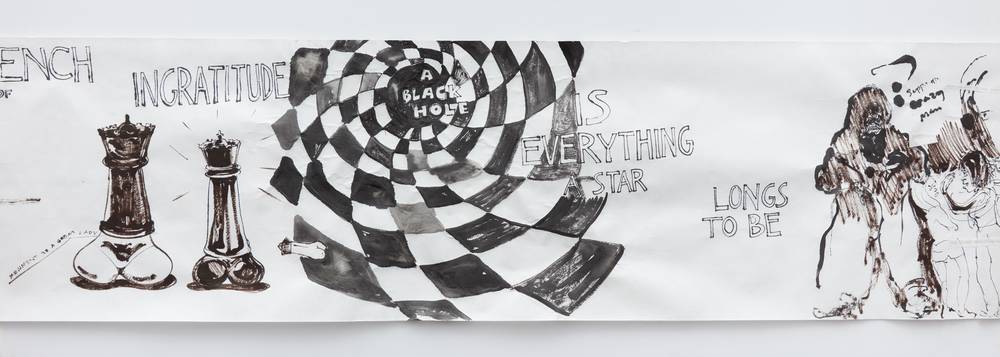
That’s pretty essential for our exhibition here in the SCHIRN, since we are adopting the presentation of the works exactly as they were before – although of course it can’t ever be exactly the same. Our rooms are different, after all. But I do think it’s very important to note that the curating or staging was emotional in nature, since looking into the archive automatically also gives us a view into intimate worlds. The private becomes visible. In that respect, you probably couldn’t do it without the artist, could you? So now I haven’t asked a question but made a statement. Which is no bad thing either.
[Laughs]
Exactly!
But I think that’s the important thing about the exhibition. You get a unique overview of her drawings over the last 28 years. What happens to the works when they leave the archive?
It works in a similar way to the staging. It’s something intimate, even where historical, or political, or present-day themes are involved. And this intimacy is now being put on show for the public and thus becomes marketable, presented to voyeuristic observers. What that means is, well, I wouldn’t say it’s like selling your soul, but there is an opening up. You may be making yourself vulnerable … you become exposed through what you write or draw. She also has a number of drawings that she hasn’t shown us and probably never will.
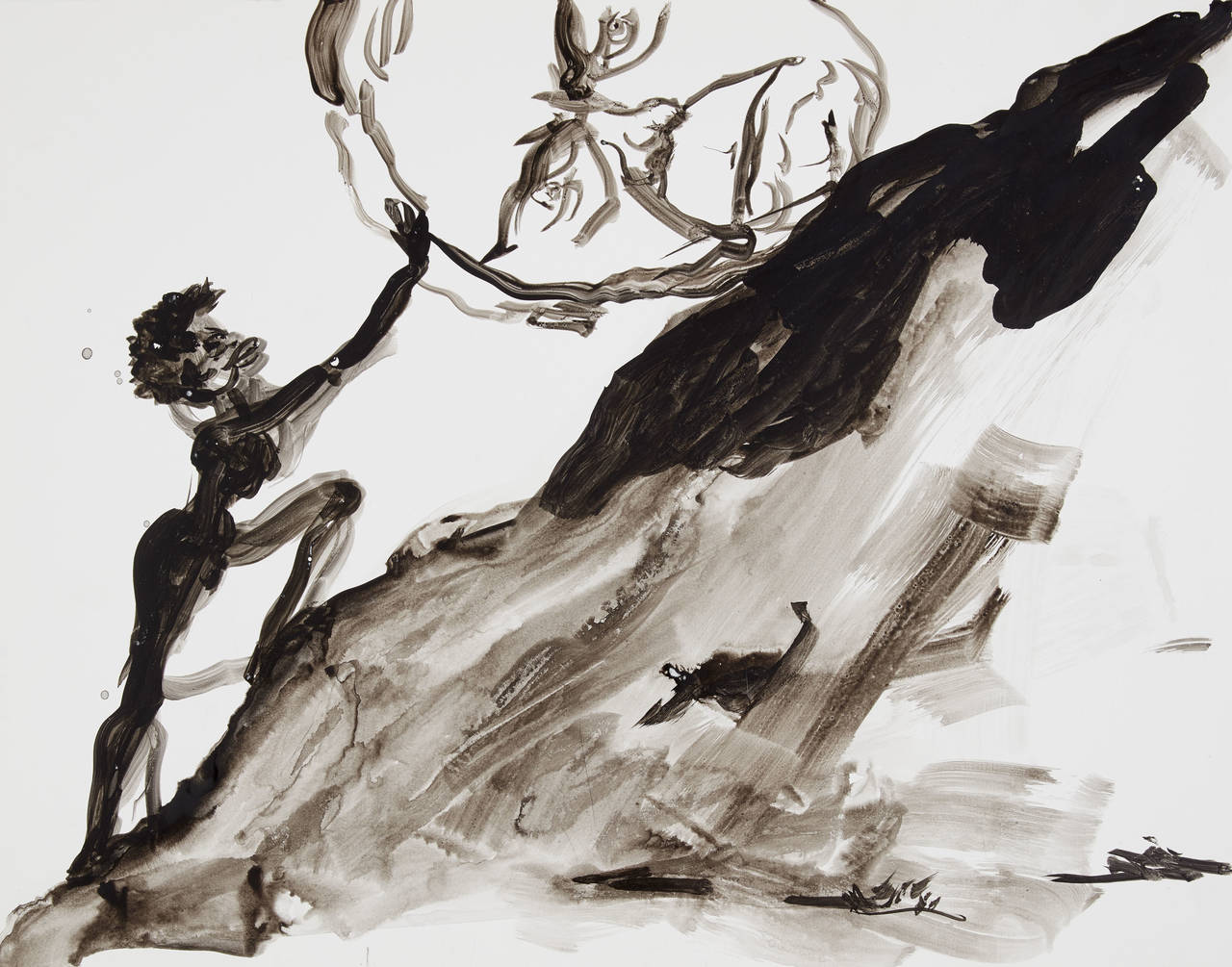
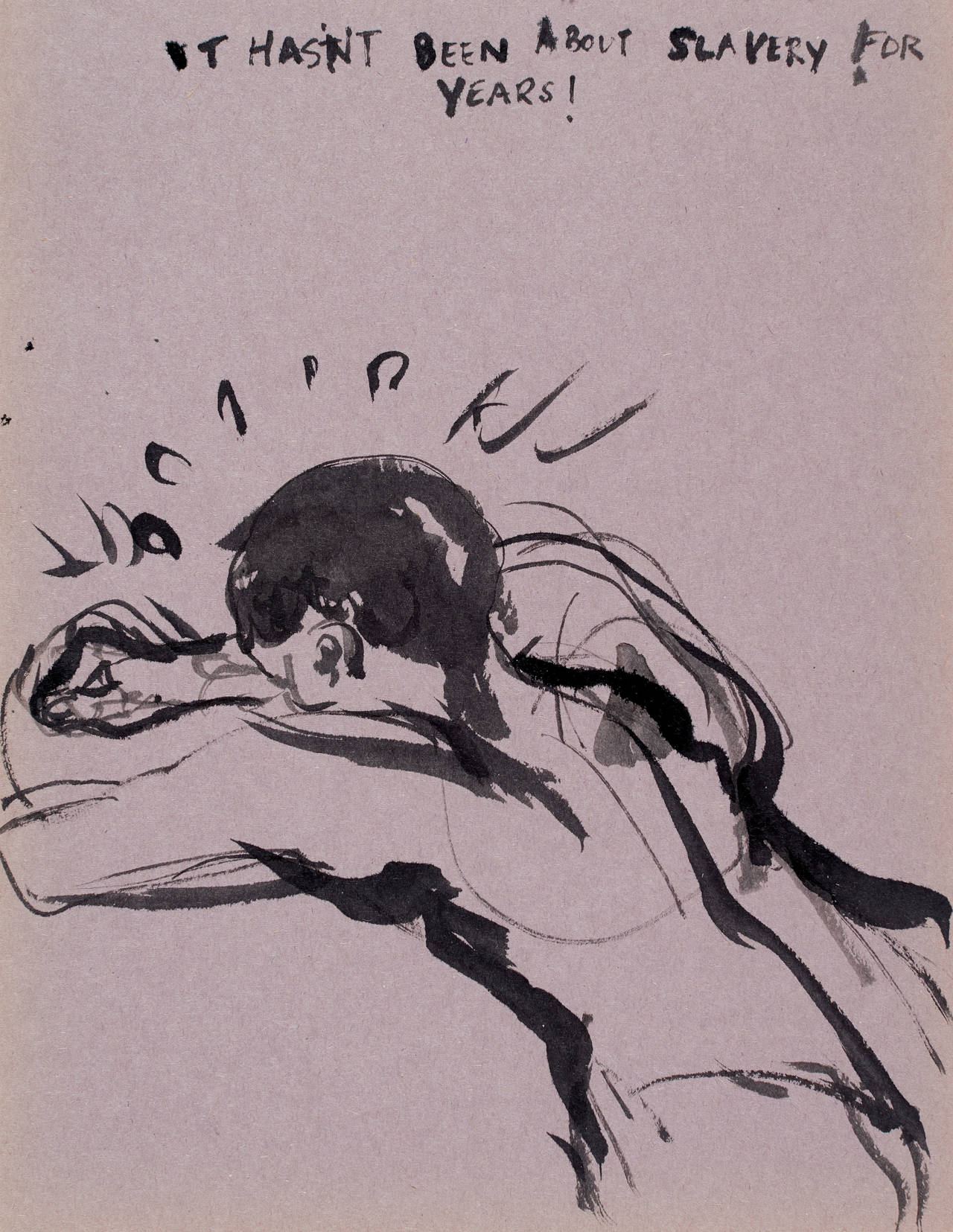
There are drawings that date back to the early 2000s, which Kara Walker says were too virulent at the time. She had to produce them, but she was not able to show them. And now she is exhibiting them – the distance of time makes it possible. Then there are works that were produced specifically for the exhibition. Do you see a fundamental difference between these groups of works?
Yes, most definitely. In the works she produced for public display, she tackles things in a very specific way. Here, she is more concerned with the Western art-historical context. This contrasts with the works from the archive which tend more towards dream recordings or doodles, pornographic romances mixed with the history of slavery and so on. The drawings from the archive are a bit more jumbled and not quite so consistent or thought out.
What role did the mediation of the themes play for you in the supporting program in Basel? To what extent can you bring the contexts in her work closer to a European or a German-speaking audience? Where are the opportunities or difficulties here?
We kept the supporting program pretty brief, in contrast to your extensive program. We had two art historians, two Kara Walker experts who gave lectures on the topic, and then we had a collaboration with the Basel Ballet. Under the supervision of Richard Wherlock they created the performance “Telling Bodies”. It was wonderful and really touching in a non-kitsch way. The way it worked was that we sat down with the ballet to work out what Kara Walker’s art means and what the archive is about in the first place. The next step was to work out what physical movements might match these very sexual, aggressive Walkerian powerplays. The choreographers then made art out of it again. In addition, we also had tours and anti-racism workshops, but these were not the major focus.
Personally, I often find what’s lacking with Black artists is that they are seen simply as artists. With Kara Walker there is no moral finger-pointing and that should be deliberately left out of her work. That doesn’t mean that anti-racism should be left out – that also needs to be named. But it’s not Walker’s primary concern. There’s no call in the style of “check you white fragility” or “decolonize the white museum”. Not at all. It’s important that you look exactly at what she’s dealing with. It’s not just slavery in the USA, but most importantly torture, racist pornography, and romance – almost like the world of the Marquis de Sade, but in drawings.
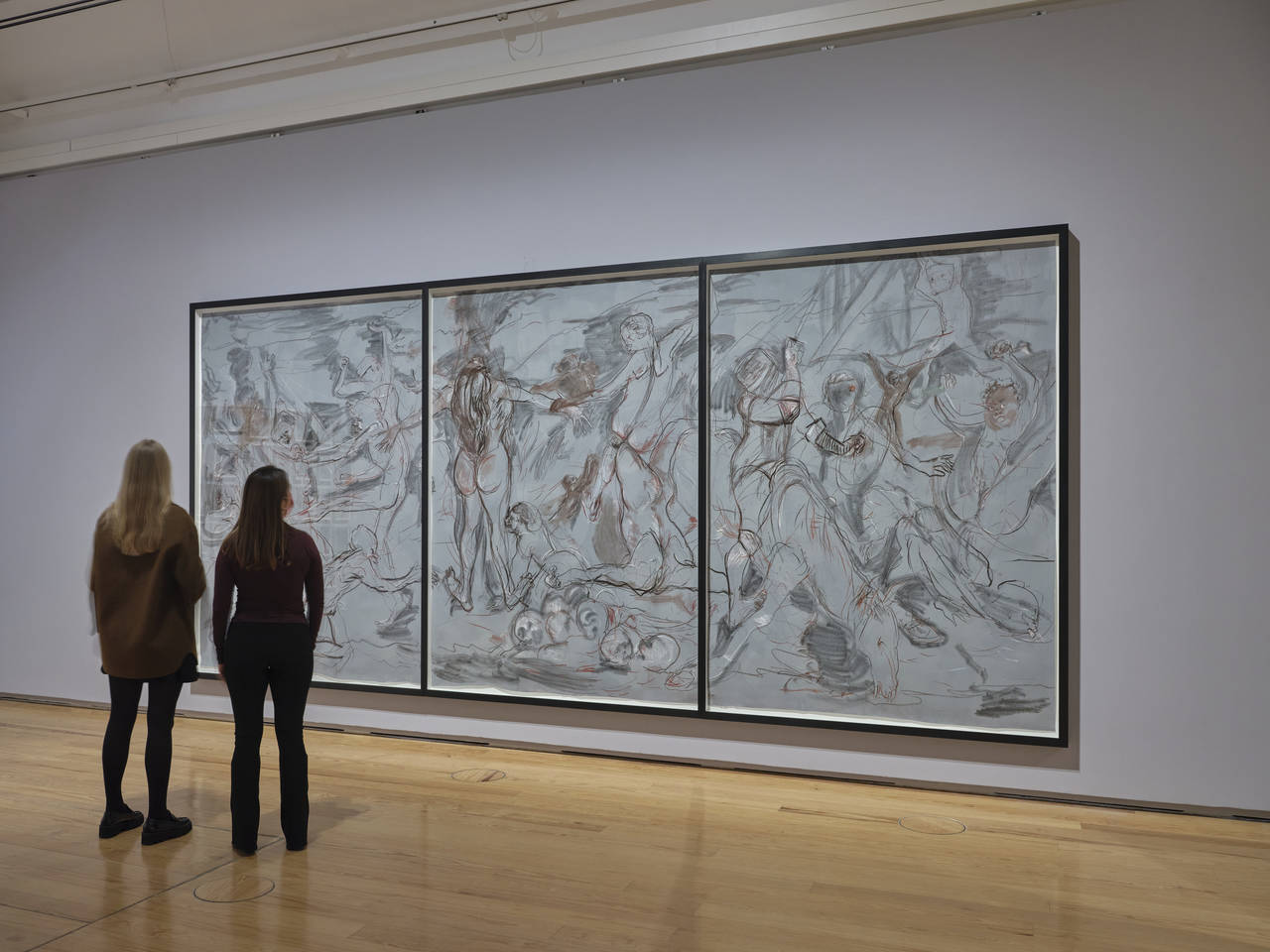
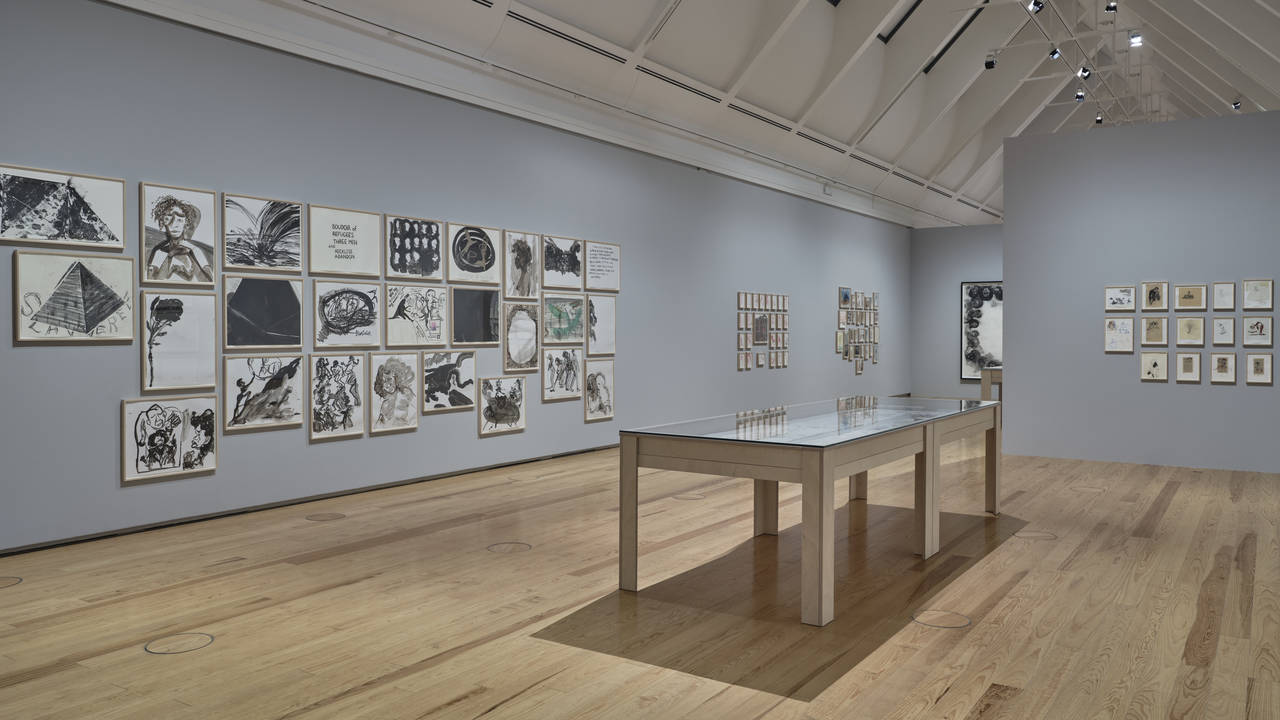
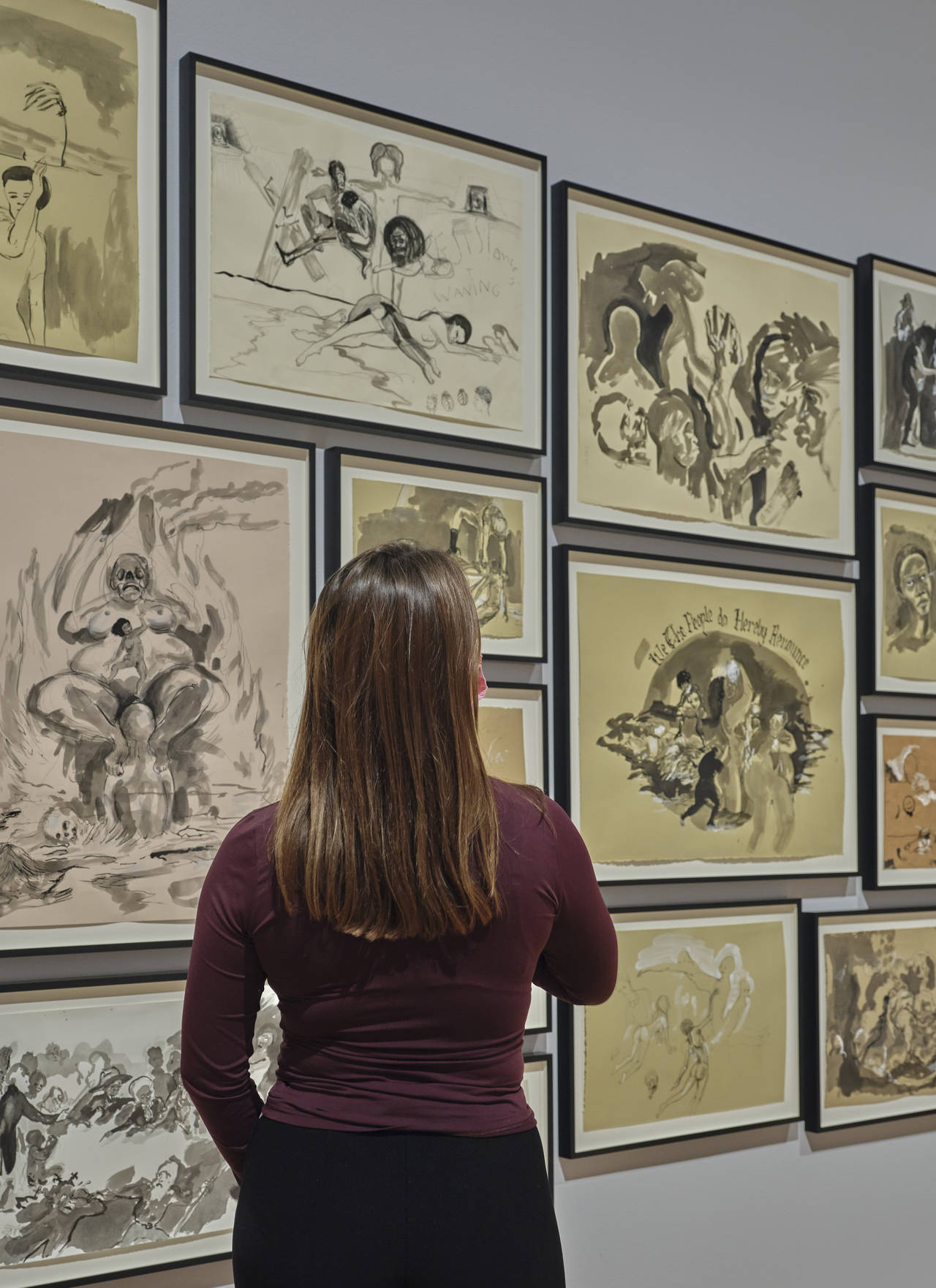
The themes Walker explores are themes like injustice and oppression of any form. That’s what’s special and also what’s difficult about her body of work: It is impossible to grasp and therefore not easy to say that this is about slavery and oppression of Black people, and on the other side the “evil whites”; instead Walker makes both sides visible. One has to endure the ambivalence in the work. In the themes on the one hand, and in the style on the other. That would be my next question: How was that received by the public? It can seem overwhelming at first with 650 papers, the many themes and then also the different styles. Renaissance, a bit of baroque, Shakespeare also appears in the title, with Barack Obama as Othello. What were the reactions like?
What struck me what how visitors talked about it being an exhibition about slavery and US history. That’s a shame. I can’t speak for the entire audience, of course, but it’s something that stuck with me and I didn’t like that. When I met school groups, then all the talk was also always about slavery in the USA. It was like moral finger-pointing, since of course schools see an opportunity to talk about this chapter of history. That’s something you can do, but if that’s the only thing that sticks from Kara Walker then it’s a great shame.
That’s something we wanted to counteract with the supporting program. We want to show that the themes very much have something to do with us. It’s not just US history and the transatlantic slave trade. The exhibition has much to do with us and our present day. Now that’s also just a statement, but I find it interesting what Walker says about herself in your exhibition film: “There is a lot of attention being paid to the outer experience of oneself.” And she continues: “The Black woman, the American woman, the female artist. But then there is still this just being.” I was quite struck by that, because I then also noticed that Kara Walker is never seen in this state of “just being”.
We need to try. She herself says: “The Black body is overburdened with history.” So the question is to what extent the identity that is imposed on you with skin color can be separated from history. Kara Walker herself says that is her primary question. To cite just a couple of examples: When will we reach a point where we can see a whip or handcuffs or a cotton plant without thinking about slavery? So how can one simply see a human being as a human being? As a Black woman, liberated from history. After all, the body is not the story. The whip and everything that supposedly has to do with slavery actually has nothing to do with me. When can the body or skin color and identity be free of history?
That’s certainly a good way to conclude and gives us some food for thought. Many thanks Noura!
KARA WALKER. A BLACK HOLE IS EVERYTHING A STAR LONGS TO BE
15 October 2021 – 16 January 2022









